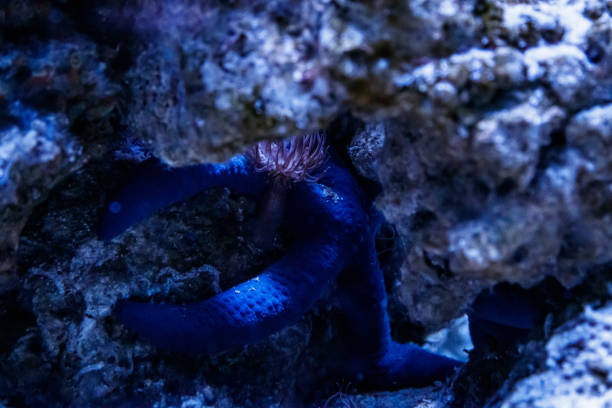Exploring the Fascinating World of Betta Fish Sororities
Betta fish, known for their vibrant colors and flowing fins, have long been popular among aquarium enthusiasts. While male bettas are often kept solitary due to their aggressive nature, a lesser-known practice is gaining traction: betta fish sororities. This unique approach to betta keeping involves housing multiple female bettas together, creating a dynamic and visually stunning aquarium ecosystem.

The Origins of Betta Fish Sororities
Betta fish, scientifically known as Betta splendens, originate from the shallow waters of Southeast Asia. In their natural habitat, bettas coexist with other fish species and even their own kind. The idea of betta sororities emerged as aquarists sought to replicate this natural social structure in captivity.
Historically, betta keeping focused on solitary males or breeding pairs. However, as understanding of betta behavior evolved, enthusiasts began experimenting with group dynamics among female bettas. This led to the development of betta sororities, which gained popularity in the early 2000s as aquarists shared their experiences online.
Understanding Female Betta Behavior
Female bettas, while less aggressive than their male counterparts, still possess territorial instincts. In a sorority setting, they establish a hierarchy through displays of dominance and submission. This social structure helps maintain stability within the group.
Unlike males, female bettas have shorter fins and are generally smaller in size. They communicate through body language, color changes, and fin displays. Observing these interactions provides fascinating insights into betta social behavior and intelligence.
Female bettas in sororities often exhibit increased activity levels and more natural behaviors compared to solitary fish. This social environment can lead to improved overall health and longevity when managed correctly.
Setting Up a Betta Sorority Tank
Creating a successful betta sorority requires careful planning and proper tank setup. The aquarium should be at least 20 gallons to provide ample space for territories and reduce aggression. A larger tank also helps maintain stable water parameters.
Dense planting is crucial in a sorority tank. Live plants like Java fern, Anubias, and floating plants create natural barriers and hiding spots. This helps reduce stress and provides refuge for less dominant fish.
Filtration and heating are essential for maintaining water quality and optimal temperature (around 78-80°F). Regular water changes and parameter monitoring are crucial for the health of the sorority.
Selecting and Introducing Betta Sorority Members
Choosing the right bettas for a sorority is critical to its success. It’s recommended to introduce 5-7 female bettas simultaneously to prevent established territories. Selecting bettas of similar size and age helps reduce bullying.
When introducing new bettas, it’s important to quarantine them first to prevent the spread of diseases. Acclimating the fish slowly to the new tank environment reduces stress and improves their chances of successful integration.
Observing the group dynamics closely during the first few weeks is crucial. Some aggression is normal as the hierarchy establishes, but persistent bullying may require intervention or removal of problematic fish.
Benefits and Challenges of Betta Sororities
Betta sororities offer several advantages over traditional betta keeping. They provide a more dynamic and visually appealing aquarium setup, with multiple colorful bettas interacting in a natural-looking environment.
Sororities also allow for the observation of complex social behaviors, offering insights into betta intelligence and personality. Many aquarists report that sorority bettas seem more active and engaged compared to solitary fish.
However, betta sororities come with challenges. Maintaining the delicate balance of the group requires constant vigilance. Aggression can escalate quickly, potentially leading to injuries or stress-related health issues.
Health Considerations in Betta Sororities
Monitoring the health of multiple bettas in a sorority setting requires diligence. Common health issues include fin damage from nipping, stress-related illnesses, and the spread of diseases in the communal environment.
Regular health checks, including observing eating habits and looking for signs of disease or injury, are essential. Having a quarantine tank ready for isolating sick or injured fish is advisable.
Proper nutrition plays a crucial role in maintaining the health of a betta sorority. A varied diet of high-quality pellets, frozen foods, and occasional live treats helps ensure all fish receive adequate nutrition.
The Future of Betta Sororities in Aquarium Keeping
As interest in betta sororities grows, so does research into best practices and long-term effects on betta health and behavior. Some aquarists are experimenting with mixed-species community tanks that include betta sororities, opening up new possibilities in aquascaping and fish-keeping.
The rise of betta sororities has also sparked debates within the aquarium community about the ethics and benefits of keeping bettas in groups versus individually. This ongoing discussion continues to shape the future of betta care and aquarium practices.
Conclusion: A New Frontier in Betta Keeping
Betta fish sororities represent an exciting development in the world of aquarium keeping. They offer a unique opportunity to observe and appreciate the complex social behaviors of these beautiful fish in a more natural setting.
While not without challenges, successful betta sororities can be incredibly rewarding for experienced aquarists. As our understanding of betta behavior and needs continues to evolve, so too will the practices surrounding betta sororities, potentially revolutionizing how we approach betta care in the future.
For those willing to invest the time and effort, betta sororities provide a fascinating glimpse into the social lives of these remarkable fish, challenging our perceptions and opening up new possibilities in the art of aquarium keeping.




